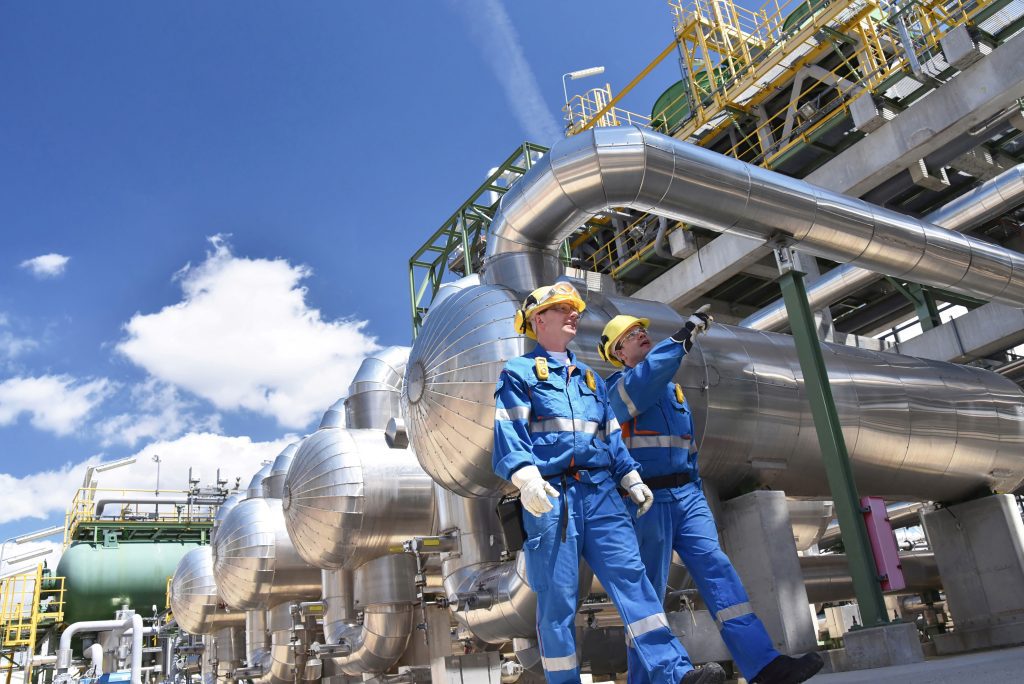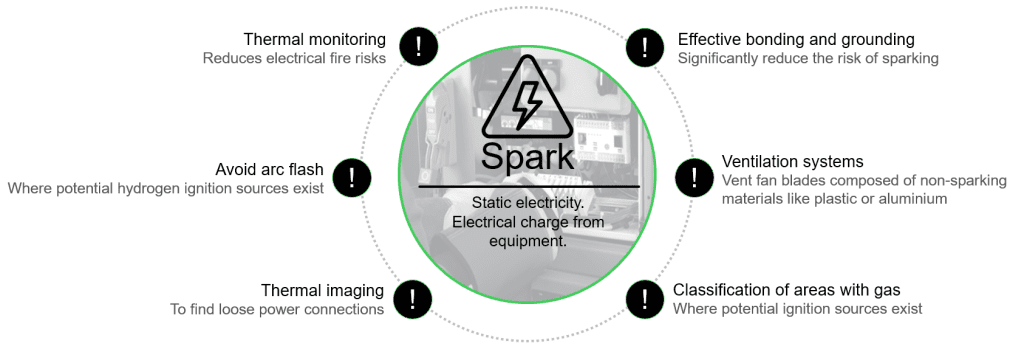When it comes to industrial safety, the stakes are high, and hazards loom everywhere. This is especially true in the chemical industry, where there are inherent risks related to manufacturing, handling, and disposing of chemicals. In 2023 alone, there were over 270 hazardous chemical incidents in the US — nearly one every day. Given those figures, process safety is critical when it comes to the chemical industry.

Electrical safety is also crucial in these chemical processes, and the potential consequences of not adhering to safety protocols can be catastrophic.
However, digital transformation — integrating digital technology into processes and electrical infrastructure — can significantly enhance safety. By incorporating energy management systems, automation and control, and advanced analytics into electrical and process measures, companies can better identify, monitor, and mitigate risks, leading to much safer work environments.
Fostering a robust, safety-first culture in the chemical industry must span all organizational layers. Let’s look at the integral components of this culture and highlight the synergy between digital transformation, culture, and adherence to safety standards.
The link between electrical and process safety
Electrical safety is critical to chemical processing, and safety risks extend throughout a chemical plant. For example, electrical discharges — sparks from panels or wiring — can occur and are hard to manage after the fact.

So, it’s crucial that safety considerations like condensation, which can occur in wiring conduits and motor instruments, are considered to prevent any dangerous water and electricity interactions. Proper circuit protection and suitable electrical enclosure and wiring system selection are essential.
Additionally, pumps, heaters, drives, and lighting operate 24/7 and require robust process safety measures to ensure vessels, tanks, and piping can be safely shut down during pump malfunctions or excessive pressure build-up.
Electrical safety measures must consider potential issues like arc faults and short circuits. A strong, cohesive electrical and process safety relationship helps ensure a safe chemical production environment. Many plants are turning to digitized systems that enhance oversight and control by monitoring equipment performance and predicting failures before they occur.
Digital transformation: Guardrails for electrical and process safety
Digitized systems enhance oversight and control by monitoring equipment performance and predicting failures before they occur. The payoff in enhanced safety and operational efficiency can be substantial: reduced accident rates, improved productivity,
cost savings, and even competitive advantage.
Digital transformations to help improve safety also extend to continuous thermal monitoring, energy monitoring and control, and digital twin technology — virtual representations of real-world processes and systems. These tools collect and analyze data to forecast potential maintenance issues or safety breaches, allowing timely interventions. Internet of things (IoT)-enabled sensors can detect abnormal conditions, like unexpected temperature rises or equipment malfunctions, that could lead to hazardous situations. Advanced power quality meters can examine incoming power quality and protect equipment from damaging power sags. All this data can be used to optimize electromechanical and chemical process efficiency and improve safety.
Precision in prevention: Streamlining risk mitigation
Managing risks linked to major energy sources — electrical, thermal, and mechanical pressures — is crucial for maintaining a secure operational environment in chemical processing. Identifying those risks includes analyzing the potential hazards associated with the energy used, such as:
- Electrical: System overload, error classification, and potential electrical discharge or arc flash that could lead to fires or explosions.
- Thermal: Excessive heat generation that could compromise material integrity and safety.
- Mechanical: Ruptures, leaks, or other failures that could escalate into catastrophic consequences.
- Chemical: Reactions, corrosion, and permeability of molecules can all lead to catastrophic events.
After identifying the risks, the focus shifts to targeted mitigation strategies, such as:
- Routine hazard reviews: Regular and systematic reviews to detect emerging risks or failures in existing controls and ensure all measures are up-to-date and effective.
- Engineering controls: Install or enhance safety devices like pressure relief valves and thermal regulators to manage and control risk factors.
- Preventative maintenance: Schedule regular maintenance to address wear and tear that could lead to safety breaches and maintain system integrity over time.
Navigating the compliance landscape
Ensuring regulatory compliance in the chemical industry is crucial for operational integrity and strategic decision-making. This involves adhering to safety standards set by organizations such as OSHA, EPA, and NFPA 70B. Regular audits, including scheduled and third-party reviews, are essential to maintain compliance, minimize operational risks, and enhance the company’s reputation.
Adhering to regulations often spurs innovation in safety practices, establishes companies as pioneers in their respective fields. Additionally, it sets new, safer industry standards.
Transforming to a culture of safety
Several factors can make reaching these top-tier safety levels challenging, including outdated infrastructure, prioritizing short-term production over long-term safety investments, and cultural resistance to new safety practices.
Companies need to prioritize safety across all organizational levels. Allocating the necessary resources to safety enhancements can significantly reduce the risk of costly accidents and strengthen a company’s reputation as a responsible operator. Moreover, driving a cultural shift that embeds safety as a core value is key. This transformation engages the workforce proactively in hazard prevention, ultimately fostering a safer, more efficient working environment.
Integrate digital technologies into your operation
Schneider has the expertise to help customize an action plan for a safe, digital electrical infrastructure, electricity procurement, and workforce enablement. Discover how EcoStruxureTM Power and Process can help improve your process and electrical safety.



Add a comment